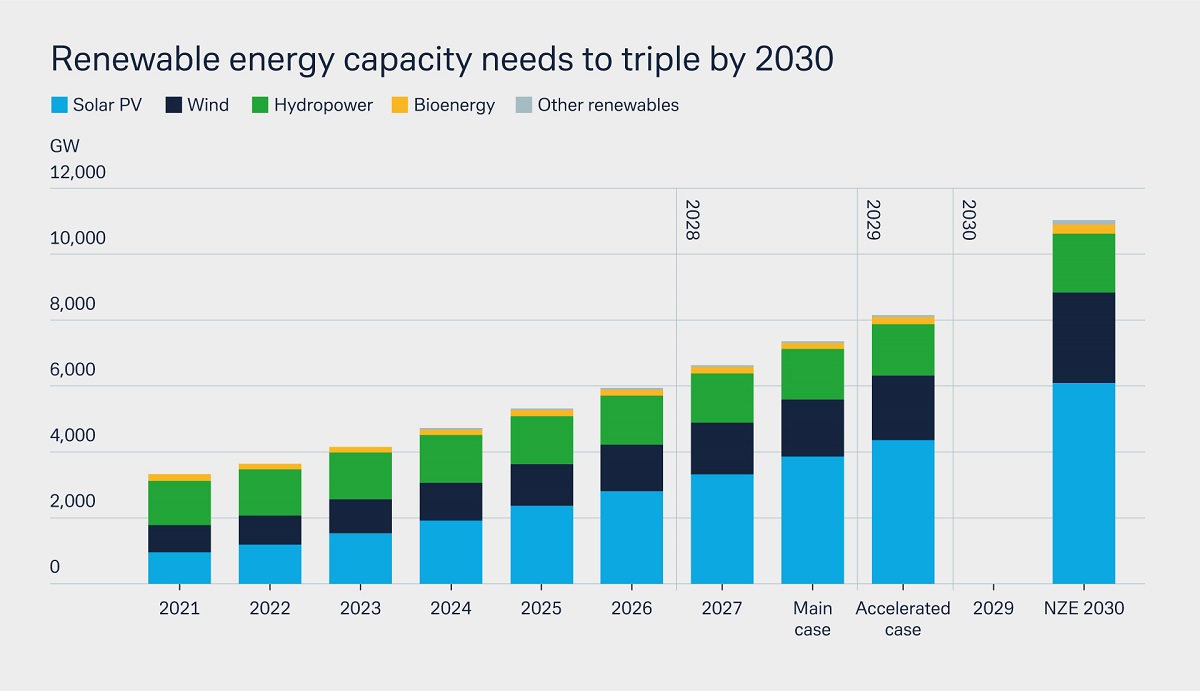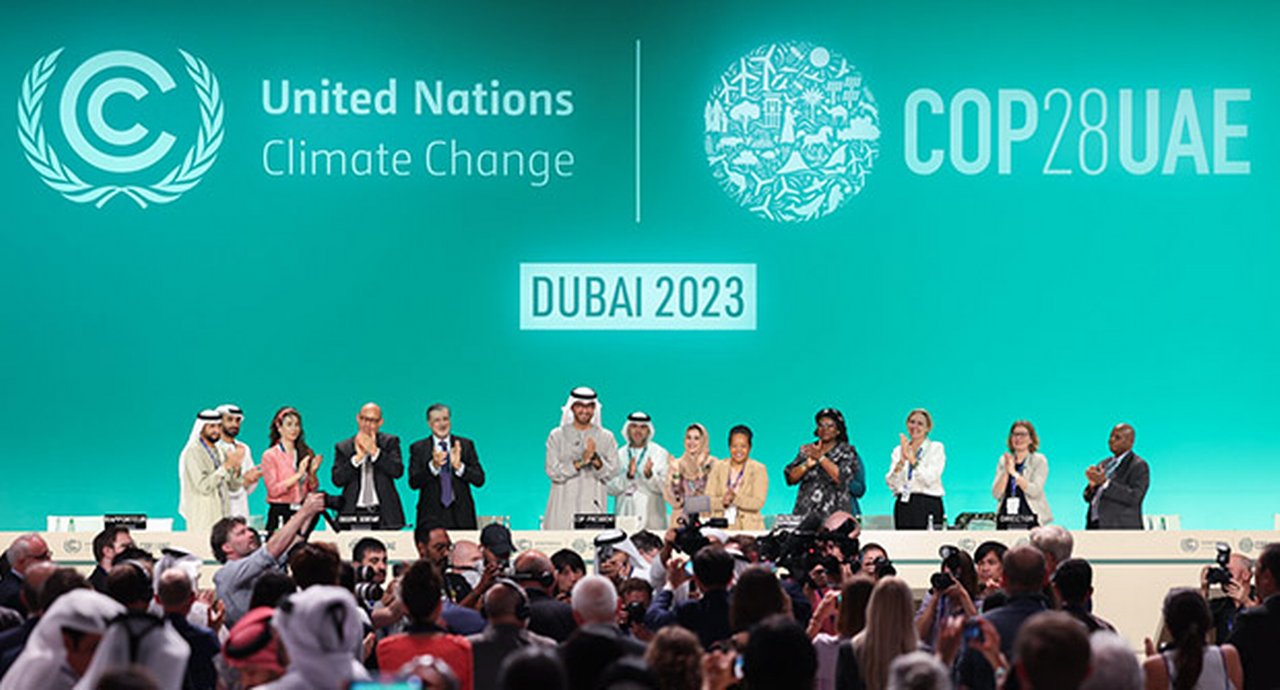6 March 2024
What is next for ESG in 2024? From the greater focus on the impact and execution of sustainability targets, to new geopolitical and regulatory priorities, flow explores eight key sustainability themes that corporates should watch out for
MINUTES min read
2023 was a year of change for the global sustainable finance market. After several years of significant growth, fuelled by initial net-zero commitments and pandemic-related sustainability financing, the market encountered disruptions from late 2022 and into 2023. Geopolitical tensions, economic uncertainties and rising interest rates combined with higher public scrutiny around the credibility of sustainability targets led to a challenging environment for financial markets in general – including sustainable finance.
Despite these headwinds, environmental, social and governance principles (ESG) according to S&P Global, issuance of green, social, sustainable and sustainability-linked bond issuance was expected to reach US$900bn to USD$1trn in 2023, thus almost reaching 2021 levels.1 The United Nations Environment Programme’s Finance Initiative (UNEP FI) also saw a continued focus on sustainable finance worldwide. This translated into a significant increase in membership for its frameworks and initiatives over 2023, to reach a record 500 banks and insurers.2
Looking ahead, how will ESG continue to evolve? And what can corporates do to navigate the turbulence as the world experiences increasingly extreme weather, shrinking biodiversity, and environmental degradation? With priorities seemingly shifting towards a greater focus on the impact and execution of sustainability targets, Deutsche Bank Corporate Bank’s ESG Client Solutions team has identified eight key themes for companies to be guided by in the coming months. flow shares their recommendations – and explores how each trend will affect corporates.
1. Focus on transition plans – ensuring clear, measurable and actionable pathways to net zero
The number of corporates with net zero pledges continues to rise. As of June 2023, 929 companies from the Forbes 2000 list had set net zero targets, double the December 2020 total of 417, according to the net zero tracker. The aggregate annual revenue covered by net zero targets has grown from US$3.8trn to US$26.4trn over the same period.3
However, these long-term commitments need to be actioned immediately to stand any chance of the 1.5°C climate threshold being met by mid-century. In October 2023, Climate Action 100+, the world’s largest investor engagement initiative on climate change, released its latest round of company assessments, showing that most focus companies are moving too slowly to align with the goals of the 2015 Paris Agreement and meet their pledges to investors.4
“Around the globe, there is a heightened need for corporates to show clear, measurable and actionable decarbonisation pathways, including how they plan to meet climate targets, manage climate risks, and the opportunities in a low-carbon economy,” says Lavinia Bauerochse, Global Head of ESG Corporate Bank, Deutsche Bank.
“There is a heightened need for corporates to show clear, measurable and actionable decarbonisation pathways”
Regulators are providing guidance on improving plans’ credibility, such as the EU’s European Sustainability Reporting Standards (ESRS). In essence, the ESRS is a reporting standard that will be used to meet the requirements of the EU’s Corporate Sustainability Reporting Directive (CSRD) which came into force in January 2023. The ESRS require companies to meet two main obligations:
- Reporting their impacts on both the environment and people;
- and how the issues these stakeholders face create both financial risks and opportunities for the company.5
The EU is not acting alone, with regulators in Japan and the UK also playing a major role in setting the standard on transition plan disclosure. In the UK, the Transition Plan Taskforce (TPT) set up in 2022 published its best practices for institutions – from corporates to academia – last October.6 Yet, while reporting obligations under ESRS are mandatory for corporates in the EU, UK TPT is currently voluntary. In Japan, the second stage of sustainability disclosure rules are on the horizon for the world’s third-biggest economy with the establishment of the Sustainability Standards Board of Japan.
2. Accelerating the energy transition
Although the higher cost of capital and inflationary pressures remains challenging, investment and new initiatives in the energy transition are still set to accelerate in 2024. Renewable energy capacity is expected to grow in solar and wind generation, with the former set to become the most important source of energy by 2050 globally, the International Energy Agency (IEA) forecasts. Moreover, hydrogen is being boosted by investment into technological advancements, although sustainable hydrogen is some way off.7
Elsewhere, the December 2023 COP28 summit saw a renewed focus on nuclear energy. In all, 22 countries – including the US, Canada, Japan, the UK , France and the United Arab Emirates (UAE) – committed to tripling nuclear generation by 2050 and move further towards clean energy targets set out in the 2015 Paris Agreement.8 On 11 January 2024, the UK government outlined plans for “the country’s biggest expansion of nuclear power for 70 years” to bolster its energy independence and meet carbon emission targets.9

Figure 1: Renewable energy capacity needs to triple by 2030
3. Geopolitical priorities shape ESG
A myriad of geopolitical tensions and economic shifts are now shaping the global ESG landscape. Most notably, the sourcing of critical raw materials related to renewables has become a contentious challenge, with dominant global players – such as the EU, the US and China – all developing strategies to identify vulnerabilities and improve resilience of critical raw materials’ supply chains. Currently, the most accessible rare earth metals are in geopolitical choke points with China producing 70% of the world’s rare earths in 2022.10
The ESG Client Solutions team expects these regulatory initiatives which promote near-shoring and the ringfencing of domestic clean industries to continue, aiming to stimulate local production and secure supply chains against potential disruptions.
In the US, for example, the Biden administration’s Inflation Reduction Act (IRA), signed into law in August 2022, will help to further deploying capital towards clean energy and cleaner industries. Although the ESG cause polarises opinion in the U.S., attracting both advocates and opponents, there is still hope for positive momentum during 2024, the team believes.
4. Making use of AI and circularity
Corporates aiming to make progress in 2024 should keep abreast of new trends, such as the growing uses of artificial intelligence (AI), circularity (whereby a product, service, or resource is renewed or regenerated, rather than wasted)11 and more frequent “extreme weather” events. Each can be expected to play a larger role in 2024 than before – and adapting to them quickly and effectively will be critical.
First, boosting circular material use is necessary to reach energy transition targets which rely on rare earth metals. Rare earths are essential raw inputs for example for wind turbines. But they also significantly improve the performance, efficiency, longevity and reliability of other products. Circularity not only helps to reduce waste, but also to reduce dependencies.
For Europe, a circular economy development path could halve carbon dioxide emissions by 2030, relative to today’s levels across mobility, food systems, and the built environment, the team quotes research from the Ellen MacArthur Foundation.12
Second, the increasing regularity of “extreme” weather events demands attention. The natural phenomenon known as the El Niño cycle – a climate pattern in the Pacific Ocean that can affect weather worldwide – is projected to intensify in 2024, likely bringing more extreme weather events.13 This will necessitate core risk management on a global scale and bring heightened pressures to mitigate the worst damage to infrastructure and the most ‘at-risk’ economies.
And finally, the increasing ubiquity of AI tools, could allow companies to improve sustainability data analysis and thus make reporting more efficient, the ESG Client Solution team writes – which is more important than ever given the evolving regulatory environment.
5. Keeping pace with the (ever) evolving regulatory environment
All of the world’s major economic powers are either developing or enhancing their ESG regulation, with an increased focus on mandatory disclosures. “As the regulatory landscape continues to evolve, corporates need to keep abreast of changes – and, where necessary, look to adapt their processes and operations to meet new and emerging requirements,” explains Bauerochse.
“As the regulatory landscape continues to evolve, corporates need to keep abreast of changes”
One shift to mandatory disclosures that corporates should be aware of in 2024 is that criteria for four additional environmental and climate objectives are applicable in the EU Taxonomy from January:
- Sustainable use and protection of water and marine resources;
- Transition to a circular economy;
- Prevention and control of pollution; and
- Protection and restoration of biodiversity and ecosystems
each bolstering the region’s existing sustainable finance framework and increasing market transparency.14 Further change in Europe will arrive this December, when the EU Green Bond Standard (EuGBS) regulation will apply – stipulating the requirements where sustainable bonds are referred to as “European Green Bonds” and intended to provide issuers and investors with greater confidence in their transactions.
Mandatory sustainability disclosures in stock exchanges are also emerging, with the US Securities and Exchange Commission (SEC) expected to publish its climate disclosure rules, currently scheduled for spring 2024. The UK and Singaporean authorities are evaluating the alignment of listing rules with the International Sustainability Standards Board’s (ISSB) requirements.
6. New carbon pricing regimes
Carbon pricing is gaining importance as policy tool to manage emissions. In May 2023, the EU adopted the Carbon Border Adjustment Mechanism (CBAM), a tariff on carbon intensive products – such as steel, cement and some electricity – imported to the European Union, which requires reporting on a product’s emissions. The CBAM transitional period began on 1 October and since its launch other countries are now considering the option of a carbon tax. From 2026 onwards, corporates must provide CBAM certificates, while the UK plans to introduce a carbon border tax from 2027.
Moreover, the expanded use of voluntary carbon credits will require credit integrity, a concern being addressed by initiatives such as the multi-stakeholder independent governance body the Integrity Council for Voluntary Carbon Markets (ICVCM) in their 10 Core Carbon Principles.15
In addition, corporates increasingly introduce internal carbon pricing as a tool to achieve climate targets, the ESG client solution team observes. When a business sets an internal carbon price, a cost is typically assigned to each ton of carbon emitted so this can be factored into business and investment decisions, incentivising efficiency and enabling low-carbon innovation.

Atlantic forest river in Pernambuco, Brazil
7. New frontiers in biodiversity and nature capital
Another issue corporates have to deal with in 2024 is biodiversity and nature capital, as novel disclosures, new initiatives and investments continue to ramp up. For example, a recent global investor initiative, Nature Action 100 has begun engagement with 100 companies collectively worth more than US$9trn in market capital, calling on them to meet six targets related to protecting nature.16
There is also increased guidance from voluntary disclosure frameworks, such as the Taskforce on Nature Related Financial Disclosures’ (TNFD) – a global organisation established to provide companies with a voluntary framework to quantify and disclose financial risks, and financial opportunities, that relate to nature.17 The TNDF published the final version of its recommended disclosures in September 2023, which will help businesses and finance to integrate nature into decision making. A total of 320 companies, financial institutions and market service providers have already signalled their intent to adopt the recommendations.18
Combatting water scarcity will remain a key focus this year, with the investment, corporate and political communities looking at climate adaptation measures – such as drought management and water conservation plans – a priority. As part of this trend, the EU aims to present its Water Resilience initiative in Q1 2024. This promises to “raise awareness of the need to reuse and save water especially in the tourist sector and promotes water laws and national initiatives.”
8. Supply chains are a key lever to achieve net zero
While supply chain diversification and resilience remain priorities for many companies (see Theme 3 “Geopolitical priorities shape ESG”), supply chains are also a key level to achieve decarbonisation targets. Depending on the sector and the company, Scope 3 emissions can account for up to 90% of a companies’ carbon footprint. Yet – by definition – they cannot usually be controlled by that company and are thus difficult to be calculated and reduced.
“Collaboration is key to tackle Scope 3 emissions, and we see corporates increasingly working with value chain partners to refine data quality, reduce emissions, and address social challenges,” Bauerochse says, pointing out two new relatively new ways to address ESG targets in supply chains:
- Carbon insetting – which involves investing in nature-based solutions such as reforestation, agroforestry, renewable energy, and regenerative agriculture;19 and
- Calculating Scope 4 emissions – which can be defined as reductions that occur outside of a product's life cycle or value chain, but as a result of the direct use of that product.20
Sources
1 See spglobal.com
2 See unepfi.org
3 See zerotracker.net
4 See climateaction100.org
5 See finance.ec.europa.eu
6 See ifrs.org
7 See iea.org
8 See spglobal.com
9 See france24.com
10 See flow article - Rare earths – a powerful attraction
11 See unep.org
12 See deutschewealth.com
13 See bbc.com
14 See clarity.ai/
15 See icvcm.org
16 See esgclarity.com
17 See debevoise.com
18 See tnfd.global
19 See plana.earth
20 See plana.earth



